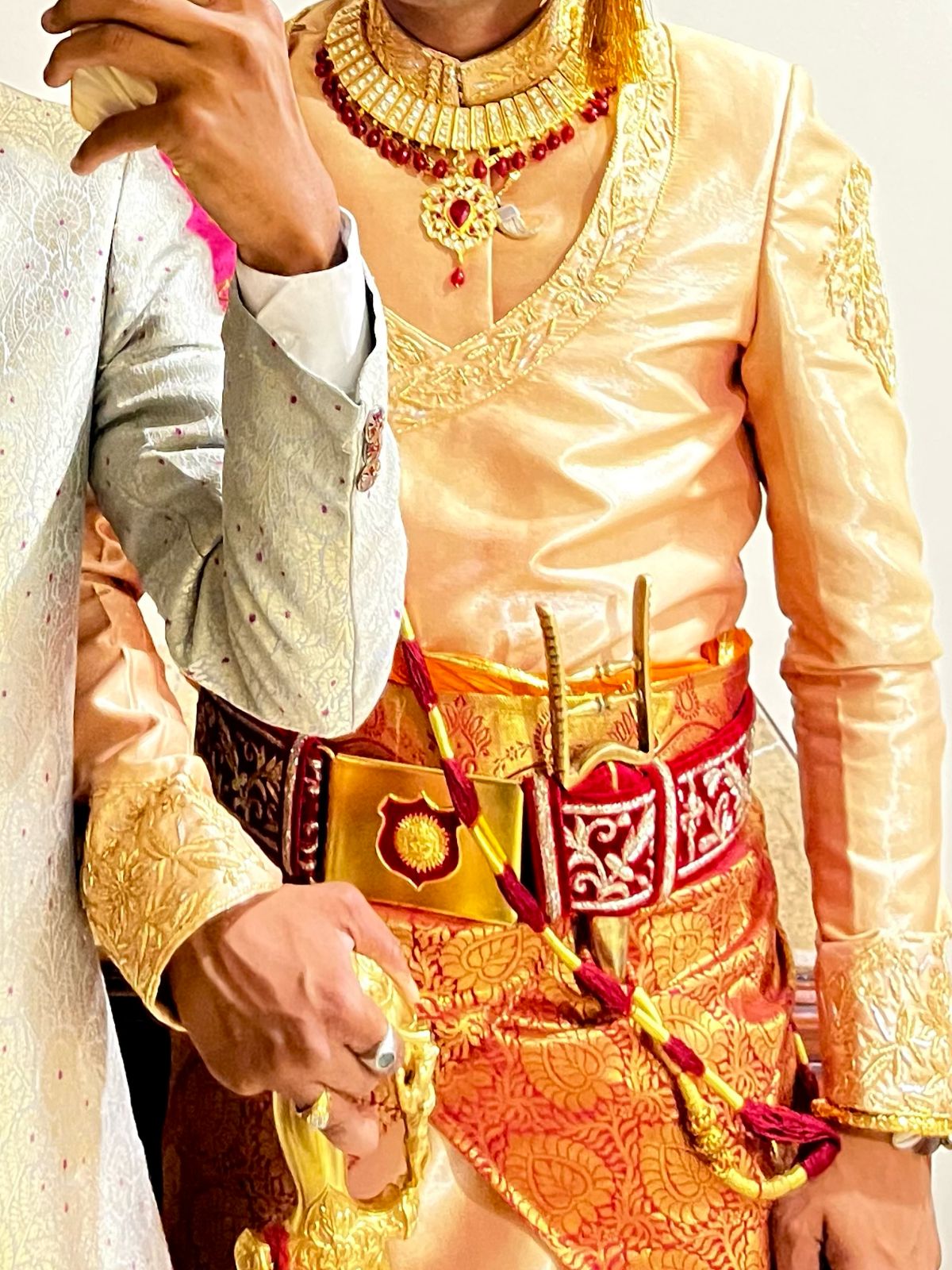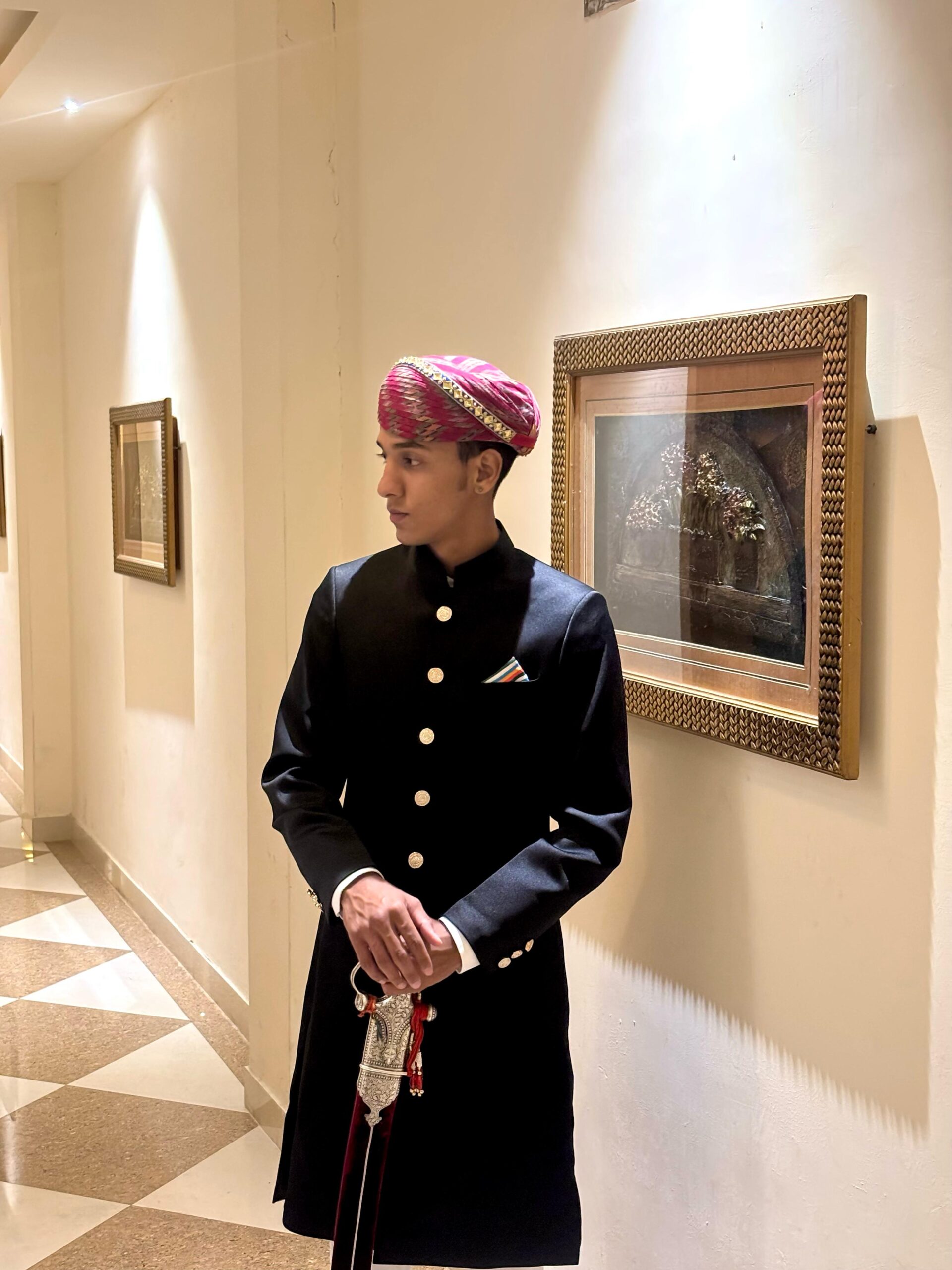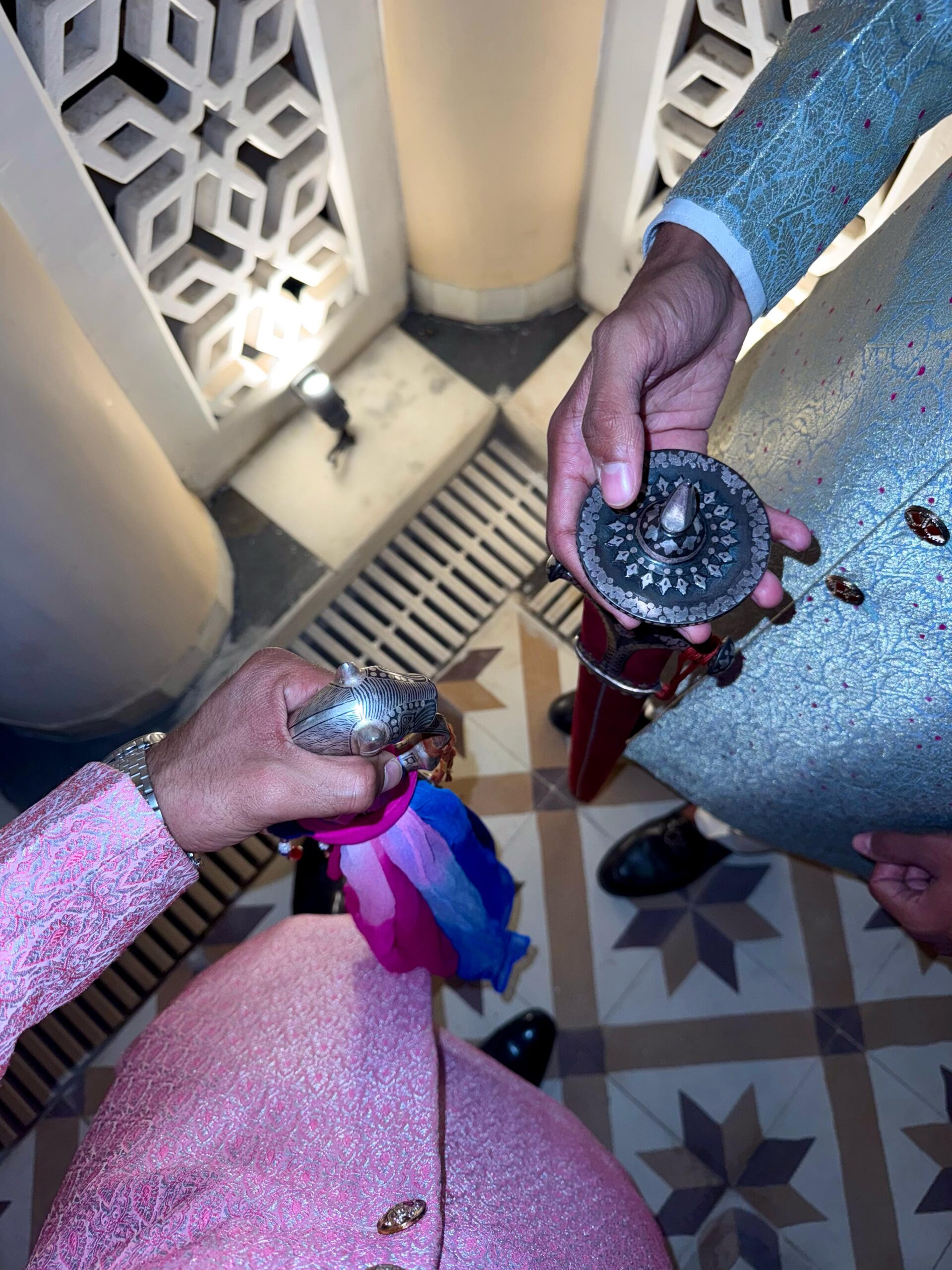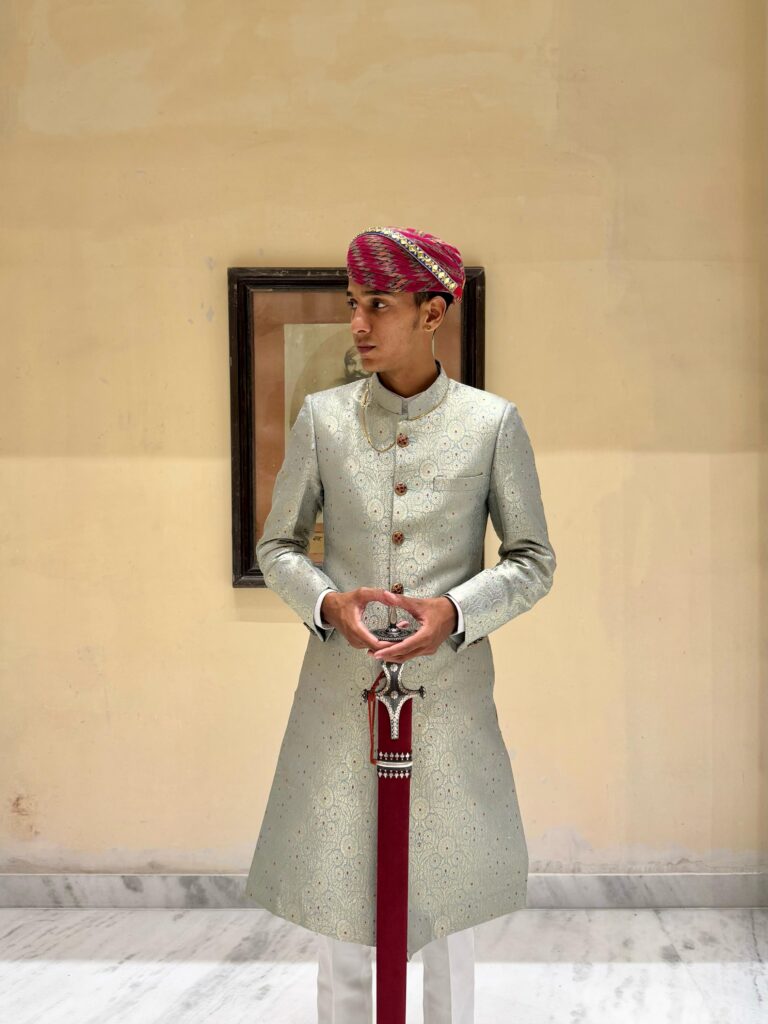The history of the Rajput kings is both rich and intricate, as it spans centuries and covers a vast geographical area of India. Rajputs were the warrior nobility of Rajasthan and Northern India, known for their valor, honor, and chivalric traditions. Their attire, which evolved over time, reflects their warrior heritage, cultural influences, and the social status they held.
History of Rajput Kings:
Origins of the Rajputs:
The term “Rajput” is derived from the Sanskrit words “Rajaputra”, meaning “son of a king” or “royal lineage.” Rajputs are believed to have emerged around the 6th century CE as a distinct warrior class. They were mostly Rajput Kshatriyas (warriors) and formed the backbone of the defense of northern and western India. Many Rajput dynasties trace their origin to solar or lunar dynasties and even claim descent from great mythological heroes such as Lord Rama or Lord Krishna.
Components of Rajput Kings’ Outfits:
- Angarkha (Royal Tunic):
- The Angarkha was a long, flowing tunic worn by Rajput kings, typically made from fine silk or brocade. This garment, often decorated with intricate embroidery, was a symbol of royalty. During formal occasions or battles, it was adorned with gold and jeweled threads.

- Achkan and Kurta:
- Later on, the Sherwani style became popular, especially among the Mughal-influenced Rajput kingdoms. The Sherwani was a long coat-like garment, heavily embroidered and often worn over a kurta (a long shirt).

- Turban (Pagri):
- The turban, or Pagri, was a significant part of the Rajput king’s attire. It was worn to signify their royal status. The color, size, and style of the turban varied based on the king’s dynasty and his standing within the Rajput hierarchy. Jeweled ornaments, or sarpechs, were often placed in the turban.
- Dhotis and Churidars:
- Rajput kings typically wore dhoti, a cloth wrapped around the waist, or churidars, which were a form of fitted pants, beneath their royal tunics. The cloth was often rich and elegant, sometimes embroidered with gold or silver.
- Jewelry:
- Rajput kings were known for their wealth and their affinity for jewelry. Their jewelry included necklaces, armlets, rings, and heavy earrings, often made of gold, diamonds, rubies, and emeralds. These were symbolic of their status and power.
- Armor and Weapons:
- For battle, Rajput kings wore intricately designed armor made from metal or hardened leather, often decorated with elaborate engravings. Their weapons, including swords (often called Khanda), shields, and daggers, were also part of their royal attire. The sword, in particular, was an essential symbol of their warrior spirit and chivalric values.

- Capes and Cloaks:
- During special ceremonies, Rajput kings would wear flowing capes or cloaks, often made from velvet or brocade. These garments were decorated with elaborate embroidery and gemstones.
- Footwear:
- Rajput kings wore Mojaris or Juttis (traditional Indian shoes) made of leather, often adorned with embroidery. These shoes were functional for both battle and courtly activities.

